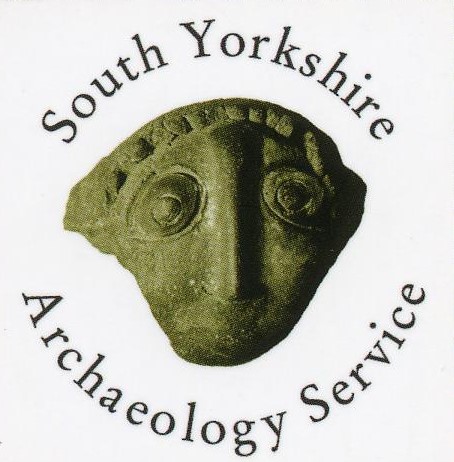Plonk Wheel (Rivelin Waterpower Sites)
Location/Address
500m upstream of Glen Bridge, Rivelin Valley Road, Sheffield S6 5SD
Type
Other site, structure or landscape
Assets that cannot fit any of the other categories. This category includes sites of archaeological interest, where the original form and function may not be apparent without the use of archaeological techniques and interpretation.
Description
Former water-powered grinding Wheel and water management system. One of the Rivelin Waterpower Sites. Also known as "Sawbridge", "Siddall" or "Bobby" Wheel.
Plonk Wheel and associated water management system are the remains of a water-powered mill site built in around 1737. It was used for cutlery grinding and possibly as a saw mill. It was listed as ruined by 1852, and for some reason the mill was never rebuilt or used again.
The water management system extended to the east and west of the site of the former mill buildings. The former mill dam is situated on the bank above the trail footpath and is completely overgrown, although with a stream running through from the hillside above. Nothing remains of the mill building or tail goit, but parts of the head goit (which was fed directly from the Swallow Wheel tail goit) can still be seen in places as a channel between the path and the hill slope above.
Now it is easy to miss the site of Plonk Wheel, which is located from about 30 m upstream of the Hind Wheel weir, on the south side of Rivelin Valley Road, near to the ‘S-bend’ (Glen Bridge). The site is owned by Sheffield City Council and there is open access. A public footpath (the Rivelin nature and heritage trail) passes the site, between the mill dam and the river. The trail can be accessed from various points along Rivelin Valley Road and from surrounding footpaths.
A marker post installed at the site by Rivelin Valley Conservation Group gives a brief history and links to a website where further information and pictures can be found.
Plonk Wheel is one of the 20 water-powered mills built in the Rivelin Valley. This sequence of Rivelin mills and mill dams forms an essential part of Sheffield’s heritage. They also have a broader national and even international significance in relation to the history of the Industrial Revolution in Sheffield.
Further information and pictures of Plonk Wheel and other sites in the Rivelin valley can be found at https://rivelinvalley.org.uk/rivelin-trails-2/. See also the books ‘Walking the Rivelin’, by Sue Shaw and Keith Kendall (6th edition, 2019, Rivelin Valley Conservation Group) and ‘Water Power on the Sheffield Rivers’, by C. Ball, D. Crossley, N. Flavell (Editors), (2nd Edition (2006), South Yorkshire Industrial Society).
Statement of Significance
Age
Built in around 1737. It was listed as ruined by 1852, and not rebuilt.Rarity
This asset is an integral part of an especially rare system of waterpowered sites, described in more detail in the Rivelin Waterpower Sites asset.Architectural and Artistic Interest
This site is one of a group that collectively and individually demonstrate the construction techniques and interrelationships of waterpowered sites, described in more detail in the Rivelin Waterpower Sites asset. The tail goit of Swallow Wheel originally joined the head goit of Plonk Wheel (next downstream). This is a technique used to enable high density exploitation of a river that is especially characteristic of upland streams such as those in Sheffield during a period of unprecedented industrialisation.Group Value
This site contributes to the significance of the Rivelin Waterpower Sites asset and to the waterpower sites on other rivers in the city, and is integral to an understanding of the role and impact of waterpower in Sheffield. Swallow and Plonk Wheels have group value as the tail goit of the former feeds the head goit of the latter directly.Historic Interest
This site is of historic interest in its illustration of the uses of waterpower, central to the reputation fame and identity of Sheffield; the many and varied uses for waterpower; the industrial development of the area; the impact of communications and topography; the lives and trades of working people; and the practice and policy of landowners, This is described in more detail in the Rivelin Waterpower Sites asset. There was a dispute over the sale to the Water Company, resulting in a sale in 1856 for £550, nearly twice the original offer of £300, despite being in a ruinous state. This illustrates the sometimes fraught dealings with the Water Company, as the requirements of industry and the need to supply clean water to an increasing population conflicted.Archaeological Interest
This site has the potential for underground remains that with further investigation could reveal their development over time, including changes of use and the evolution of industrial processes and construction techniques. Because the sites were not overtaken by later industrial development, any remains are likely to be relatively intact.Landmark Status
The Rivelin Valley is an extremely popular leisure destination for local people, largely defined by its waterpower remains, including this site.Date Listed
15 Aug 2022
Last Updated
19 Apr 2022
Comments and Feedback
Do you have any questions or more information about this record?



.jpg)

